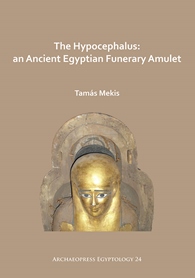| Main » Ad Board » ДРЕВЕН ЕГИПЕТ И АФРИКА » Религия и философия |
| 25.12.2020, 10:47 | |
Хипоцефалусът (ст. гр. "хипокефалон" - "подглавник") е рядък древноегипетски амулет с форма на диск, част от погребалния инвентар на мумиите. Появява се около IV в. пр. н.е. и излиза от употреба около II в. пр. н.е., обхващайки хронологически части от Късния период и епохата на Птолемеите. Както показва името му, полага се под главата на покойника и има протективни и апотропични функции. Не се ползва от всички, а се открива при погребения само на жреци, при това от определени места и фамилии - употребява се от клира на Амон в Тива, Мин в Ахмим и Птах в Мемфис. Известни са само 158 находки на такива артефакти, при това голяма част от тях е позната само по описания, а самите обекти са загубени. Tamás Mekis - The Hypocephalus: An Ancient Egyptian Funerary Amulet, Oxford, Archaeopress, 2019 - на английски език, от MEGA, формат PDF.Сваляне с ляв бутон (downloading by left button) и после през бутона Download. АЛТЕРНАТИВЕН ЛИНК / ALTERNATIVE LINK: Tamás Mekis - The Hypocephalus: An Ancient Egyptian Funerary Amulet, Oxford, Archaeopress, 2019 АЛТЕРНАТИВЕН ЛИНК / ALTERNATIVE LINK: Tamás Mekis - The Hypocephalus: An Ancient Egyptian Funerary Amulet, Oxford, Archaeopress, 2019 - на английски език, от Google Drive, формат PDF. Сваляне с ляв бутон (downloading by left button) от страницата на предоставящия сървър, после през бутона стрелка надолу/after by down arrow button.
| |
| Views: 1380 | Placed till: 25.03.2022 | Rating: 0.0/0 | |

